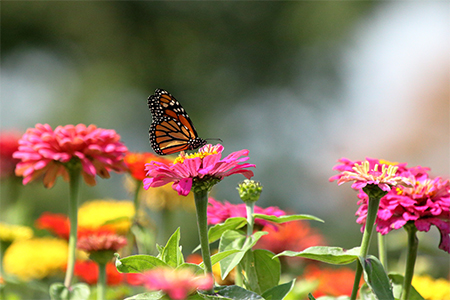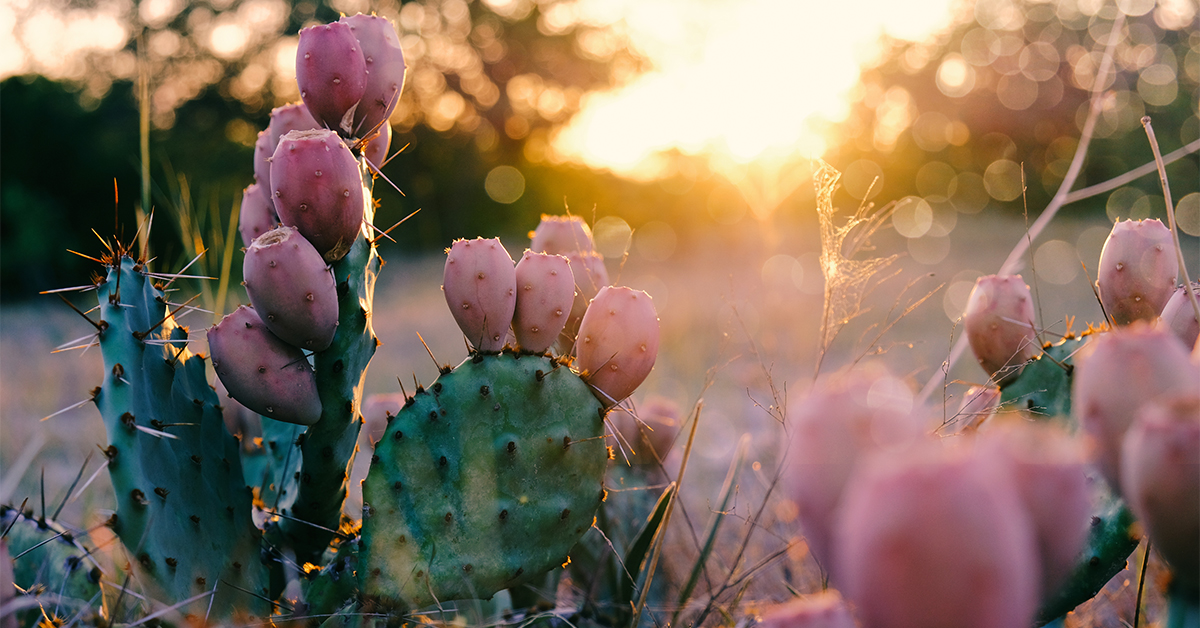Go Green: Tips for an Environmentally Friendly Backyard
With another hot and dry summer on the horizon, homeowners in Phoenix are gearing up to get their yards ready. If you’re looking for ways to conserve more water this upcoming summer, one of the easiest ways to do so is to incorporate a few eco-friendly landscaping designs. Up to 60% of household water use in the summer is from landscaping and irrigation, so careful planning can have a significant impact on both the environment and your wallet. A water-saving design is easier than you might think, and you don’t have to sacrifice color!
7 Eco-Friendly Landscaping Ideas
Here are a few tips on how to create a more environmentally-friendly backyard.
1. Reduce the Amount of Lawnspace
A simple way to reduce the burden on the environment is to reduce the amount of grass in your backyard. However, that doesn’t mean you have to pave over the yard. Planting large flower beds in the corners of your yard or utilizing hardscapes such as stone pathways can significantly reduce the amount of water needed to irrigate your yard adequately. Reduced water use is better for the environment!
2. Plan Your Garden
Another easy way to reduce your outdoor water use is to plan your garden carefully. For example, annual plants require much more water than perennial plants. Annual plants only last one growing season, while perennial plants last for more than two years and continue to grow until they reach maturity. Planting your garden in the fall tends to reduce water use due to the cooler temperatures and above-average rainfall.
Plant Drought-Tolerant Plants
You can’t drive anywhere in Phoenix without seeing a succulent. Drought-resistant plants such as cacti, agave, lavender, and sage are excellent choices for an environmentally-friendly yard, as they don’t require much water or maintenance.
Consider a Pollinator Garden

Planting a pollinator garden is a fun way to support the local bird and bee population while helping the environment! What’s more, is that pollinators love bright colors, so your butterfly garden is lovely to look at while relaxing in the backyard.
Group Similar Plants Together
By planting plants with similar watering needs together, you can reduce the amount of time you spend in your yard watering every day. Additionally, some plants benefit from what’s called “companion planting.” Companion planting is the process of placing plants close to each other to protect them from pests and diseases.
Use Native Plants
When planning your garden, make sure to incorporate native plants, as they are best suited for the area.
3. Use Mulch
Mulch is a great way to reduce water loss. Make sure to apply mulch in your flower beds heavily. Another benefit of mulch is its ability to prevent weed growth.
4. Amend Your Soil
By ensuring that your soil has enough of the essential nutrients your plants need to grow, you can reduce the burden on the surrounding environment. Use organic fertilizers and stay away from pesticides, as toxic ingredients may end up in a nearby creek or another water source.
5. Consider Installing Artificial Grass
The easiest way to conserve water and save money is to replace your grass with synthetic turf. Your yard will look green all year, and you can rest easy that you’ve done your part for the environment, all while enjoying the savings!
6. Don’t Use Pesticides
Some pesticides contain toxic chemicals that can severely harm the surrounding environment. Make sure to use organic fertilizers and other chemical-free pest control methods to have the least impact on your local environment.
Pull Weeds Often
Keeping up with weeding can help prevent the need for pesticides.
Mow Higher
Most people cut their lawns too short. Mow your grass to a height of two to three inches to keep weeds out of your beautiful yard. Leave the clippings after you mow so that the organisms in your soil can “recycle” those lawn clippings and turn them into natural fertilizer!
Plant a Healthy Variety of Plants
By planting a variety of plants in your garden, you don’t risk losing every single one if a pest makes its way into your backyard.
7. Practice Smart Watering
Watering too much or too little both harm plants. By learning how to give your yard what it needs, you can save money on utility bills, conserve water, and have healthier plants.
Water Deeply, Not Often
Your plants will thank you if you allow their soil to dry between waterings partially. Annual plants need water at the first sign of wilting, but perennials can go much longer without water. You only need to water your perennials if they remain droopy after dark.
Make Every Drop of Water Count
Direct your home’s downspouts toward the lawn or plant beds, and use both compost and mulch to reduce erosion and help rainwater soak in. By utilizing rainwater, you’ll reduce the amount of water needed to keep your lawn healthy!
8. Remember: Reduce, Reuse, Recycle
If you’re committed to a greener backyard, it’s critical to reduce your use of resources, reuse items when you can (such as old cans repurposed as planters), and recycle items when you no longer have a use for them. The less waste, the better!
What Can MasterAZScapes Do For You?
As your local professional landscaper in Phoenix, we have experience in the landscaping business going back to 1986. We work with you to identify your ideals, habits, and style in creating landscaping that is as functional as it is beautifully suited to your unique flair. Our skilled landscapers work with lush grass, artificial turf, desert scaping, fire features, retaining walls, shade structures, outdoor kitchens, and more. We are an experienced contractor that can handle the limitless possibilities available for Phoenix landscaping. Make it happen with MasterAZscapes LLC. Call today, and we can get started on your new, environmentally-friendly backyard!

